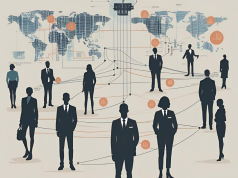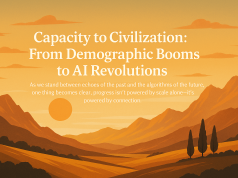As the dust settles on a tumultuous period of global upheaval due to COVID-19, the traditional pillars of workspaces have undeniably shifted. Remote work, once a fringe benefit offered by progressive companies, vaulted into the mainstream, becoming a necessity overnight. Now, as we edge into a post-pandemic world, its long-term viability is under scrutiny.
The onset of the pandemic served as an unplanned experiment in mass remote work, offering a chance to assess its efficacy away from the confines of the office. Employees basked in newfound flexibilities, such as zero commutes and personalized work environments, while companies benefited from reduced overhead costs. Yet, the remote work paradigm is not free from challenges. The lack of face-to-face interaction can stifle collaboration, innovation, and affect company culture. Managing remote teams demands new strategies and tools to keep employees engaged and maintain productivity.
As we consider the future, companies are tasked with developing robust policies that balance the flexibility of remote work with the collaborative spirit of traditional office environments. The hybrid model has gained popularity, providing a middle ground that allows for scheduled in-person engagements while preserving the autonomy of remote work. This approach aids in sustaining a company’s ethos and fosters a shared sense of purpose among employees.
However, widespread remote work has implications that ripple far beyond the office. Urban economies, accustomed to the daily influx of commuters, must adapt to a reduced on-site workforce. This shift could lead to a recalibration of city infrastructures, public transportation, and local businesses that once thrived on office foot traffic.
Real estate, too, faces an evolution. A decrease in demand for commercial properties might be mirrored by a surge in residential needs, as workers seek out homes with space for home offices. This trend could redefine urban development, leading to a rise in multi-functional living spaces and a potential slump in city-center property values.
The environmental impact of remote work appears, on the surface, to be positive. Reduced commuter traffic points to lower emissions—a win for air quality and the fight against climate change. Yet, the long-term environmental footprint of widespread remote work remains to be seen, with potential increases in home energy consumption and electronic waste from individual tech setups.
Looking ahead, technological innovation will continue to shape the landscape of remote work. Advancements in virtual and augmented reality might soon allow for more immersive and interactive remote collaborations, potentially bridging the gap between physical and digital workspaces.
In the next decade, we can envision a workforce that is more geographically dispersed yet more connected than ever, with technology providing the backbone for this global workplace. Companies that successfully harness the benefits of remote work while mitigating its drawbacks will likely emerge as leaders in this new era of employment.
The shift to remote work is not just a response to a global crisis; it is a transformative moment in the history of work. For companies and employees alike, navigating this transition presents an unprecedented opportunity to redefine the when, where, and how of productivity and collaboration.
For employers, it’s a wake-up call to embrace flexibility, invest in the right tools, and foster a culture that transcends physical boundaries. For employees, it’s a chance to reclaim work-life balance without sacrificing career progression. And for society, it’s a moment to thoughtfully shape our urban and environmental future. We stand at the cusp of a new working world—one in which the traditional office is only one option in a wider repertoire that defines our work times.

























